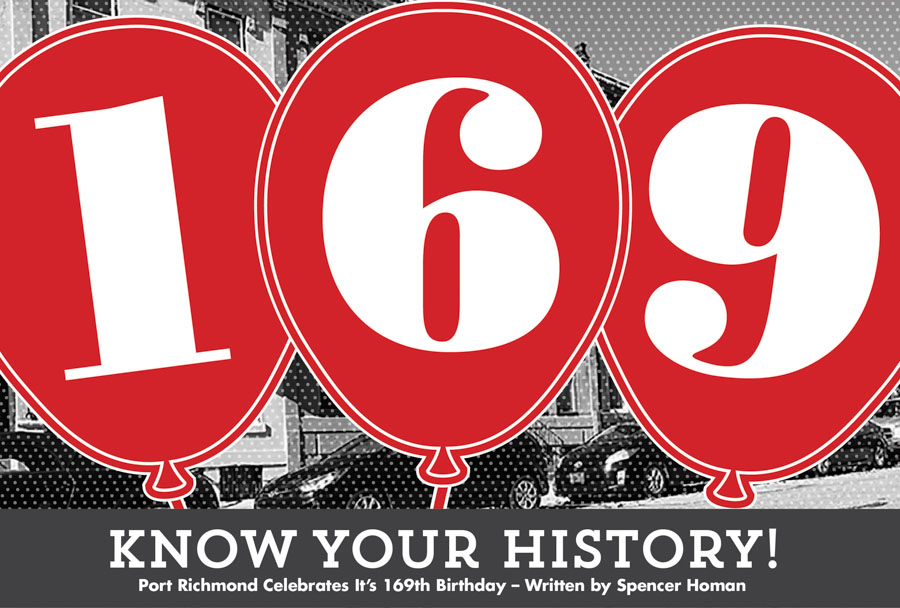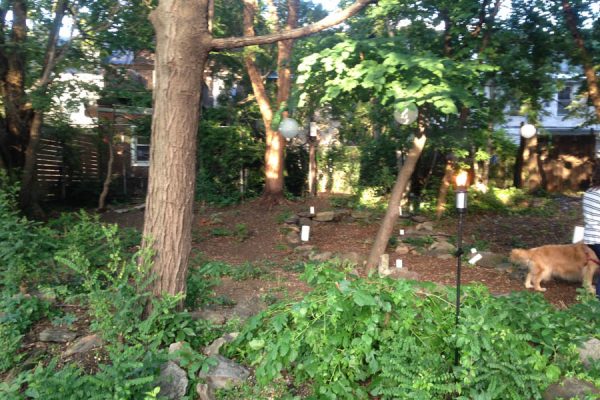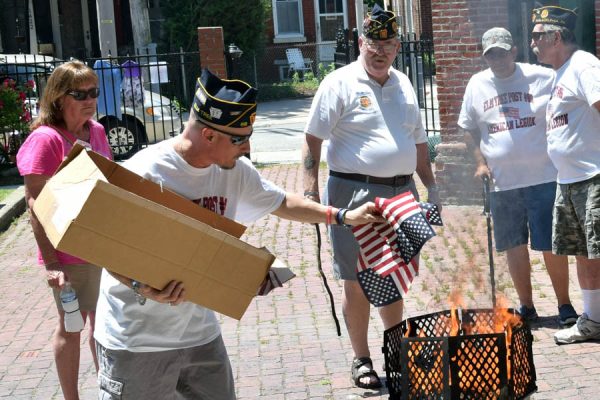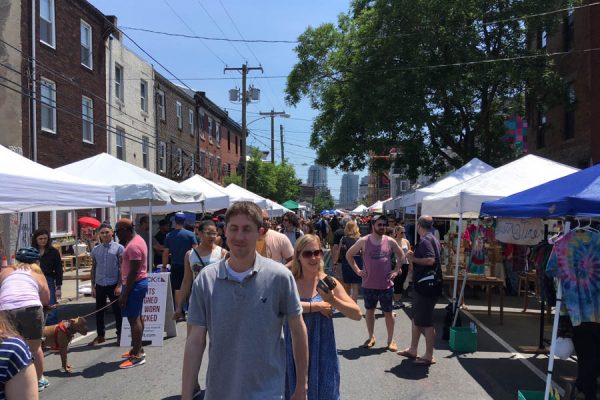Know Your History! Port Richmond Just Celebrated It’s 169th Birthday
With connections to Ben Franklin, George Washington, international wars and much more, Port Richmond should be considered a significant historical location in the northeast. On February 27th, Port Richmond celebrated the 169th anniversary of being officially incorporated as a District of Philadelphia. Although this area connects to a much larger puzzle of revolutionary America, the background on the neighborhood itself has a history much richer than most would ever expect.
The land of Port Richmond is first notably recorded in the purchase of the Fairmount Estate in 1729. At the time, Anthony Palmer was the owner of a huge amount of land including present-day Port Richmond and areas into Kensington. Palmer called this land “Hope Farm” and he began to sell off parts of his property throughout the 1730s.
Palmer was more interested in the land of Kensington. He wanted a way to be a part of the city of Philadelphia without being completely immersed in the lifestyle of an inner city in the first half of the eighteenth century. Palmer would sell “Hope Farm” to pursue building up his biggest land interest at the time, Kensington, of which he would become the founder.
Palmer was a busy man since coming to the United States around 1700 from Barbados. In addition to buying and selling huge plots of land in the city of Philadelphia, he also served on the Pennsylvania Provincial Council up through his death in 1749. He had a short stint as the Acting-Governor of Pennsylvania between June 1747 and December 1748. During his time in office, Palmer would play a significant role in creating early volunteer armies (different than militias), using province-to-province diplomacy and keeping Pennsylvania safe during King George’s War (both from pirates and Native Americans).
Though an interesting man, Palmer’s stories will garner more detail in future articles. When Palmer sold “Hope Farm” on April 22nd, 1729 for 2,140 pounds of Philadelphia currency, it is the recipient of the land that is going to make Port Richmond what it is today.
William Ball (1686-1740) was the proud new owner of this land area and he decided to rename Palmer’s mansion house after a London suburb. This mansion house was named Richmond and is not far from the present-day intersection of Richmond and Cumberland Street. Many years later, all of “Hope Farm” would be called Richmond.
But for now, “Hope Farm” earned a different name. The southeastern area of Ball’s property from Gunnar’s Run (Dyott Street) to the Delaware River was nicknamed “Ball Town.” The same year that William Ball bought “Hope Farm” from Anthony Palmer, Ball’s son was born on the land as well. His son was conveniently named William Ball (1729-1810) and he would live in “Ball Town” as well as on Market Street in 1795.
The younger William Ball has a deep connection to the Sons of Liberty that founded the United States. He was related to Mary Ball, who was the mother of one of the greatest Americans to ever live, General George Washington. In 1761, William would be appointed as the Provincial Grand Master of Masons in Pennsylvania. On present-day Gothic Street, the first Masons’ meeting lodge was erected, to which William was a large contributor. Gothic Street was known as Lodge Alley at the time that this meeting-place was constructed.
Ball married his cousin Elizabeth Byles from Boston, who was the daughter of a priest. When Ball died in 1810, he had no heir to his property. His will named three people to take over his wealth: his father-in-law John Hewson, his friend Joseph L. Inglis and his brother’s son Joseph Ball.
By the time that Joseph was a co-executor of his grandfather’s (and most recently, his uncle’s) estate, it was already referred to as Richmond, for the name of the mansion house that his grandfather renamed after his purchase. A growing industrial economy in the area, specifically in coal, created many ports due to the increase in trade, building projects, and a need for access to the Delaware River. One specific company that was established in the 1830s was The William Cramp & Sons Shipbuilding Company, which will be an area of emphasis in future articles. This growth changed the name of what was once “Hope Farm,” “Ball Town,” and “Richmond”… finally to Port Richmond.
38 years after the death of William Ball and 108 years after the death of his father, Port Richmond was finally incorporated as an official District of Philadelphia. There are many deeply historical stories and events that have taken place throughout the years in this neighborhood, but one of the best stories is the one about its conception.
Happy Birthday, Port Richmond!
Spencer Homan is a local graduate student and history buff. Work cited from Kenneth Milano’s 2008 articles from March 8th and March 10th, as well as his 2009 articles from January 15th, 22nd and 29th, sourced from kennethwmilano.com. Information was also sourced from Joseph Jackson’s Encyclopedia of Philadelphia, Vol. 1, as well as palmercemetaryfishtown.com, navsource.org and ushistory.org.








